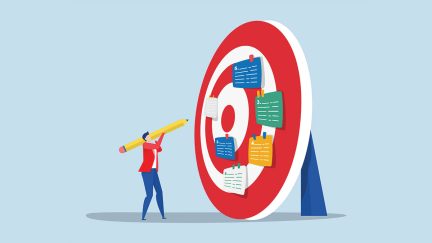For more stories like this, sign up for the PLANADVISERdash daily newsletter.
Recently Hired 401(k) Plan Participants Likely Choose TDFs
Interest in target-date and other types of balanced funds remained strong through 2014, with younger plan participants more likely to hold target-date funds (TDFs) than older participants, according to a new joint study released by the Employee Benefit Research Institute (EBRI) and the Investment Company Institute (ICI).
In 2014, 60% of 401(k) participants in their 20s held TDFs, compared with 41% of 401(k) participants in their 60s.
The study, “401(k) Plan Asset Allocation, Account Balances, and Loan Activity in 2014,” also found that recently hired participants (two or fewer years of tenure) most likely use TDFs—59% of recently hired 401(k) participants held TDFs, compared with 48% of 401(k) plan participants overall.
“Target-date funds are a popular, convenient investment choice for savers looking for professional asset allocation, portfolio diversification, and automatic rebalancing over time,” says Sarah Holden, ICI senior director of retirement and investor research. “More than 70% of 401(k) plans included target-date funds in their investment lineup in 2014, and recently hired workers, in particular, often invest in these diversified funds.”
Among participants who were offered TDFs, 65% opted to use them.
NEXT: Most 401(k) assets in equitiesThe study found about two-thirds of 401(k) assets continue to be invested in stocks through equity funds, the equity portion of balanced funds, and company stock in 2014. However, 401(k) participants’ investment in company stock continued at historically low levels. Only 7% of 401(k) assets were invested in company stock in 2014. This share has fallen by 63% since 1999, when company stock accounted for 19% of assets.
An additional 27% of 401(k) assets were in fixed-income securities such as stable value investments, bond funds, and money funds.
“The bulk of 401(k) assets continued to be invested in equities at year-end 2014,” says Jack VanDerhei, EBRI research director. “This is driven in part by younger plan participants, who have higher concentrations in equities. Participants in their sixties remain focused on growth as well, however, allocating 56% of 401(k) plan assets to equity investments.”
In 2014, 8% of 401(k) plan participants in their 20s had no equities, while three-quarters of them had more than 80% of their account balances invested in equities. In comparison, 12% of 401(k) plan participants in their 60s had no equities, while only 22% of them had more than 80% of their account balances invested in equities.
Other findings of the study include:
- 401(k) participants were slightly less likely to have loans outstanding at year-end 2014 compared with year-end 2013. At the end of 2014, 20% of all 401(k) participants who were eligible for loans had loans outstanding against their 401(k) accounts, down from 21% at the end of 2013.
- The average 401(k) account balance tends to increase with participant age and tenure. For example, in 2014, participants in their thirties with more than two years and up to five years of tenure had an average 401(k) balance of close to $25,000, while participants in their sixties with more than 30 years of tenure had an average 401(k) account balance of nearly $275,000.
The study is based on the EBRI/ICI database of employer-sponsored 401(k) plans, which includes statistical information about 24.9 million 401(k) plan participants in 81,139 plans, which hold $1.9 trillion in assets and cover 45% of the universe of 401(k) participants.
Full results of the annual EBRI/ICI 401(k) database update are posted on each organization’s website, at www.ebri.org and www.ici.org.You Might Also Like:

Capital Group Names Top Focus Areas for DC Investment Consultants

Financial Wellness Moves From “Nice to Have” to Table Stakes
